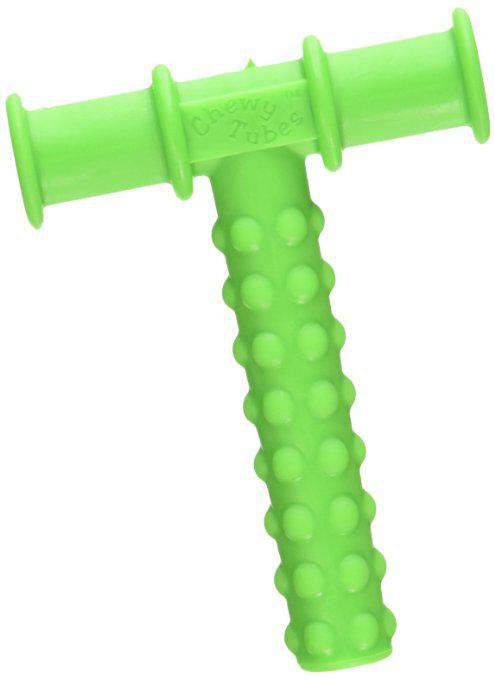Description
Chewy Tubes are chews that help calm down or satisfy a need to chew.
They can also help develop oral-motor skills related to speech,
swallowing and eating (biting, chewing).
? Free and voluntary by the child to work on returning to calm and to fill a
need to chew or bring objects to the mouth.
? In a directed manner with the adult who guides the child in order to reproduce different
mouth exercises that will improve speech or eating (ability
to chew, to tolerate textures in the mouth, etc.).
? Therapeutically by health professionals (occupational therapist,
speech therapist, etc.).
They can also help develop oral-motor skills related to speech,
swallowing and eating (biting, chewing).
? Free and voluntary by the child to work on returning to calm and to fill a
need to chew or bring objects to the mouth.
? In a directed manner with the adult who guides the child in order to reproduce different
mouth exercises that will improve speech or eating (ability
to chew, to tolerate textures in the mouth, etc.).
? Therapeutically by health professionals (occupational therapist,
speech therapist, etc.).
| Kind | Diameter | Shape | Resistance level | Details |
| Red (textured) | 1.42cm | T | Advance | Super Chewy Tube offers greater resistance than regular Chewy Tubes. Its bumpy texture allows for more oral stimulation. |
| Red | 1.3cm | T | Intermediate | Requires a force of jaw closure intermediate. |
| Blue | 1.6cm | T | Advance | Requires a force of jaw closure more high. |
| Green (texture) |
1.3cm | T | Beginner to intermediate |
Its bumpy texture allows more of oral stimulation. |
| Orange | P | Beginner to advanced, according to the objectives |
Possibility of nibbling the tail or the rounded part, according to the objectives. Easier to hold shape for young children. |
|
| Orange | Q | Beginner to advanced, according to the objectives |
Possibility of nibbling the tail or the rounded part, according to the objectives. The right end is less longer than Chewy Tubes in T-shaped, which can be useful to avoid triggering a vomiting reflex in some children. Easier to hold shape for young children. |

